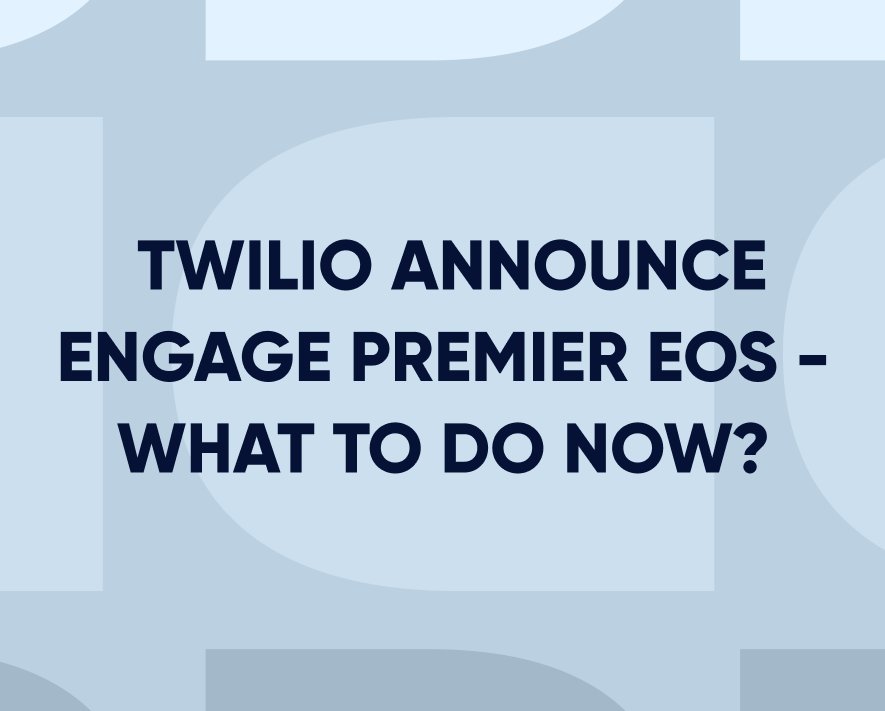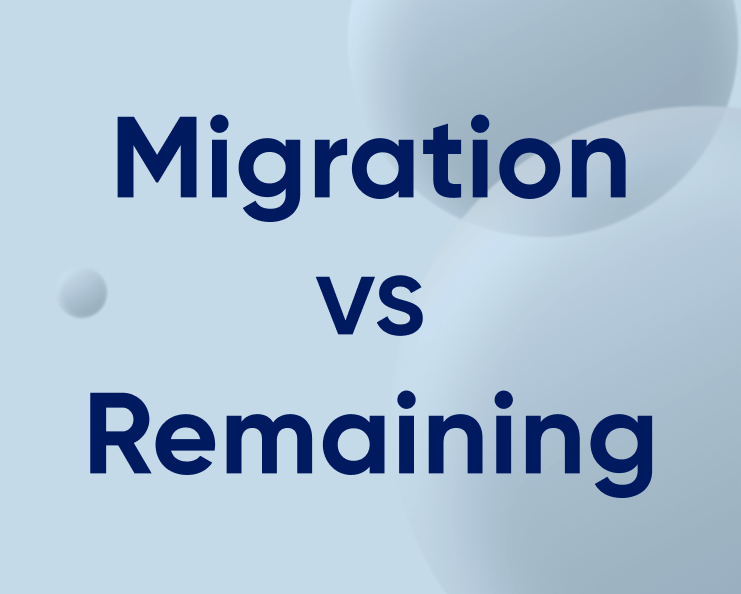Customer Experience Trends: 12 to Explore in 2023
What comes to mind when you hear or see the words “customer experience trends”? Well, depending on what kind of marketing strategies you believe in or the industry you’re in, you might have different ideas about what CX means. But, regardless of whether you’re a traditional marketer or a digital-savvy, non-conventional one, something we can all agree on is that CX has become one of the biggest factors in helping a brand stand apart from its competition.
Updated on Aug 18, 2022
We live in a world where, with minimal investment, people are able to start a business and sell their products or services, even when hundreds of others are offering the same things. In this world, earning customers and their loyalty has less to do with the product or service offered, and more to do with the experience you provide buyers, both intentionally and locally, from the time they discover your brand, through making a purchase, to offering support and post-purchase communications.
With customer experience now at the heart of every brand’s presence and success, we spoke to industry experts and thought leaders (who are also customers of different brands), to bring to you the biggest customer experience trends to look out for in the coming year. Here’s what we found out:
We surveyed marketers, founders, and eCommerce experts for their insights into what’s next in CX. We took their insights and packaged them into 12 customer experience trends to watch out for in 2023.
1. Personalization as a defining factor
“When a customer’s experience is individualized, they are more likely to make a purchase. Personalizing your clients’ experiences begins with the data you have about them. Make specific customer personas and use them to direct the content you share with each customer. Also, employ marketing automation technologies that allow you to send out trigger emails and other notifications when customers perform specific behaviors.”
Darshan Somashekar, Founder & CEO, Solitaired
Customers are expecting personalization so much, it’s no longer just an option that businesses might consider. Instead, it’s fast becoming a norm, and one that’s proven to reward well. For instance, this article shows that revenues increased by up to 15% for companies that implemented personalization.
Supported by powerful marketing automation technologies, personalization is the single most impactful CX improvement that businesses can make to see their revenues grow.
2. More self-service options for the resourceful customer
“The biggest customer experience trends I can see happening in 2021 and beyond is giving customers more self-service options. That means great IVRs, detailed FAQs and instructions, a help center with all information laid out clearly, and similar tools. If a customer can solve their own problem, they will use this option before talking to a customer support rep in chat or on the phone. Investing time and money in self-service resources will have a massive ROI in the times to come.”
Petra Odak, Chief Marketing Officer, Better Proposals
It is no secret that today’s customers are well-versed in technology, while also having attention spans that are significantly shorter than in the past. Therefore, they are quick to lose patience when having to wait long periods to get their issues resolved. This study by Zendesk shows that 67% of customers prefer self-service over speaking to a company representative. According to Harvard Business Review, 81% of all customers attempt to take care of matters themselves before reaching out to a live representative.
These numbers clearly show that customers would much rather handle an issue on their own if given the right resources to do so. It would be highly beneficial for brands to invest in such technologies to empower their customers, allowing them to resolve their issues with as little friction as possible.
This brings us to the next big CX trend that’s popping up everywhere and will continue to grow in the coming year:
3. Chatbots to aid customer service
“Artificial intelligence (AI) is making its way into the commercial world. Many businesses currently employ bots to automate sales and marketing operations, and chatbots are having an even greater impact on the digital consumer experience. AI chatbots allow brands to scale their service on up to 70% of their most commonly asked queries, allowing them to respond and resolve issues faster. For brands that choose to follow this trend, AI for customer experience will be a game-changer.”
Sep Niakan, Managing Broker, Condoblackbook
Offloading a big chunk of customer service operations to AI-powered chatbots helps businesses deliver a better, round-the-clock customer service experience, while also significantly reducing operational costs. Chatbots have been revolutionary for all businesses, with adoption rates, averaging at 40%, accelerated by the pandemic.
Investing in chatbots can help brands improve their self-service experience, contributing to an overall positive impression of their customer experience.
4.Predictive analytics for empowered decision-making
“Being a CTO, I believe companies now have access to far more customer data than ever before. Customers, in fact, are willing to give up that information if it means greater benefits for them. Companies that want to stay ahead and improve their consumers’ experiences will likely invest more in predictive analytics.”
Thilo Huellmann, CTO, levity.ai
While traditional data-collection methods like surveys do help businesses to gauge and understand customer satisfaction, they don’t rise to meet the varying data demands of businesses today. With predictive analytics, companies are able to capture accurate, unbiased data about customer interactions, which proves to be a more reliable measure of customer satisfaction and experience. Strengthened by machine learning, taking advantage of predictive analytics to power business decisions can help companies meet customer needs.
5. Building trust with sincere data privacy
“In 2021, there will be a greater emphasis on privacy and what companies do with data. GDPR and the California Privacy Act (which will not go into effect until 2023) will impact how businesses manage customer data in the future. Keep up to date on evolving laws and regulations pertaining to data privacy and protection, and ensure that your corporation is adhering to the needed parameters.”
Stewart McGrenary, Director @ Freedom Mobiles
As companies receive and store a large amount of data, there is an equal and ever-growing concern by customers about how their data is being used. Governments across the world are working to implement regulations to protect customer data. However, businesses stand to earn their customers’ trust when they show transparency, clear security principles, and strong measures to safeguard their data.
6. Enhanced accessibility with voice navigation
“Accessibility has been trending upward, and it’s well past time. One of the changes I’m most excited about is the integration of voice navigation into eCommerce. Voice search has been on an upswing for the past few years, allowing users the opportunity to search for things they need via voice commands. But the ideal situation is for users to be able to go straight from that command to be able to navigate an online storefront and buy what they need through voice alone.”
Christen Costa, CEO, Gadget Review
Voice offers vast possibilities for brands as speech recognition becomes more sophisticated and technology gets better at natural language processing. By 2023, voice-based search is predicted to jump to $40 billion. The market share for consumer spending via voice assistants is also expected to reach 18% by 2023. Leveraging the advancements in text-to-speech voices, integrating voice technology into your website or app can transform how accessible and inclusive you are, and help you reach a wider audience.
7. Transparent communication, happy customers
“Transparency is becoming a key differentiator for companies looking to stand out from their competition. With a wealth of information at their disposal, customers can make more informed choices between vendors, and they tend to choose the company that is most transparent upfront about the sale and post-sale relationships.”
Jack Vawdrey, Head of Content Marketing, Vista Point Advisors
Customers are happy when they see brands being forthcoming about all aspects of their products or services. While some companies may be nervous about being transparent for a number of reasons, customers prefer the ones that embrace and own their truth.
Jack says that companies should be able to openly answer questions like:
- What’s your pricing like?
- Who are your competitors?
- What challenges do your current customers face?
- What’s it like to work with you?
8. Empathetic conversations that bolster relationships
“Customer service agents are increasingly encouraged to engage in understanding and empathetic conversations that are bolstered by business-side digital platforms that keep track of a customer’s journey and ensure that each interaction builds on top of the last.”
Harrison Sharrett, Marketing and Content Manager, Offices.co
Providing a direct, personable line of conversation goes a long way in building rapport with the customer, compared with using distant communication terms. For instance, Harrison says, contact emails such as ‘business@business.com’ or ‘noreply@noreply.com’ can be replaced by more approachable emails such as ‘jack@business.com’ or ‘sarah@business.com’ which are designed to champion the human element of the customer service journey.
Additionally, employing a VoIP system can facilitate these empathetic conversations by providing better, streamlined communication platforms. This strategy supports a user-friendly customer service experience.
9. Pull customers instead of pushing products/services
“The COVID-19 pandemic has brought about significant changes in the buying pattern and behavior of customers. With the digital market flooding with promotional content, the marketers will now have to shift to ‘pulling the customer’ to their organization rather than ‘pushing the product’ in the market. They will also have to work harder towards making the digital platforms more interactive to ensure a smooth buying and experience for the customers.”
Jabez Reuben, Owner, The Blueprints
Customers in the digital age are increasingly discerning. They are quick to figure out when a company is simply trying to push its products or services onto them, and will reject them almost immediately without a second thought. A better strategy for brands to adopt would be to strategically pull customers using well-planned, thoughtful, and relevant content that provides value to the customer even before they use your product or service. The next time they have a need for what you offer, your content would be like breadcrumbs, leading their way to you.
10. Offering online experiences & subscription models
“I have worked with many wine and food brands that have had to pivot their businesses because of COVID. Consumer behavior has changed and gotten used to the ease of buying things online, attending online events, and wanting to customize products. Each of these trends was already happening pre-pandemic and the pandemic has accelerated this.”
Shana Bull, Shana Bull Digital
Brands would do well to rethink interactive ways to offer unique experiences adapted to digital media. Even a brick and mortar store can host live online events connecting customers and fans from across the globe, removing geographical limitations and reaching a wider audience than ever before.
Another great way of retaining customers and enriching their experience of your brand is to offer subscription options on products or services, turning one-time purchases into recurring ones. Subscription models are sustainable in the long run, offer great convenience for customers, and help businesses scale growth by understanding customers over time from data gathered during their subscription run.
11. Implementing habit loops
“Almost everything we do as people is dictated by our habits. Habits have a significant impact on how we engage with one another and with brands. It will become a priority to implement habit loops that keep customers engaged in digital settings.”
Eric Rohrback, CMO, Hill & Ponton
A habit loop is a neural loop responsible for establishing a habit. There are three parts: the cue, the routine, and the reward. A hook or cue causes an action, which results in a reward and drives investment. Many brands already implement this in many ways, with timed push notifications being some of the most common and effective ways to implement them. If you can figure out habit loops – identify the cues triggering the reflexive routines that lead to rewards – then, you can begin to shift customer behavior, helping your clients overcome negative feelings and achieve positive results.
12. Improving Employee Experience (EX) for improved CX
“Higher customer engagement, as well as other benefits such as enhanced productivity, profitability, employee retention, and even workplace safety, are all enjoyed by organizations with the most engaged employees. Your employees will have everything they need (including the motivation) to perform excellent customer service if you equip them with a successful digital workplace and efficient online training.”
Lacy Summers, CMO, Crush the PM Exam
It is no secret that the companies with the happiest employees also have the happiest customers. This has been proven statistically, as well, in a study by Glassdoor. Therefore, something that many brands should focus on in the coming year is to provide a satisfying and engaging employee experience, keeping their well-being in mind. This can go a long way in boosting employee morale, leading to better work, better products, better interactions with customers, and hence, improved customer experience.
The bottomline
Customer experience trends is evolving into an all-encompassing concept, which often extends beyond the product or service they buy. A well-rounded, memorable experience includes exciting pre-purchase interactions, smooth and seamless payment experiences with quick issue resolution, 24/7 customer support that empowers, rather than stunts, the customers, and non-invasive, genuinely curious follow-ups with useful content that pave the way for up-selling and cross-selling in the future.
In 2022, the common threads that will tie these twelve tenets together to elevate customer experience trends include: meaningful personalization at all key points during a customer’s journey; the use of AI to enable both the companies and the customer to have better experiences; harnessing the massive power of data insights to continuously improve products, services, and the all-important experience, and a special focus on improving EX.
Ready to upgrade your customer experience? Get in touch for a personalized consultation.






















